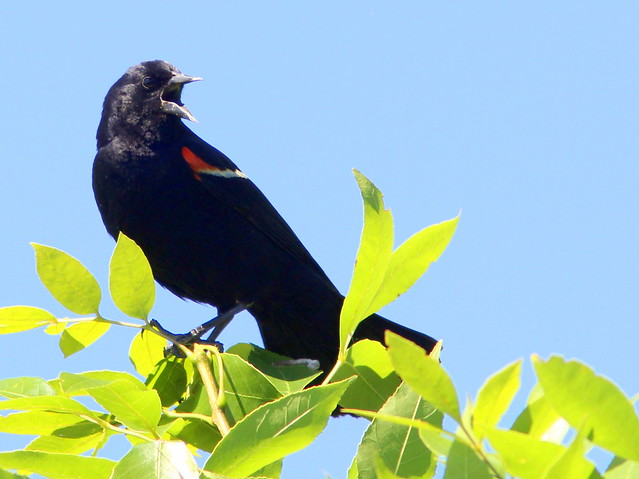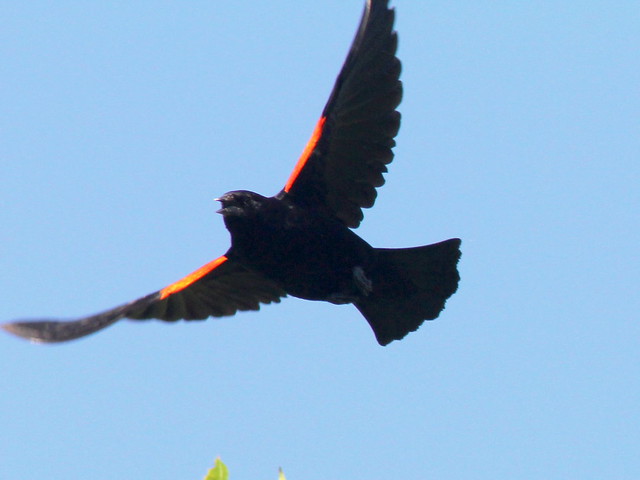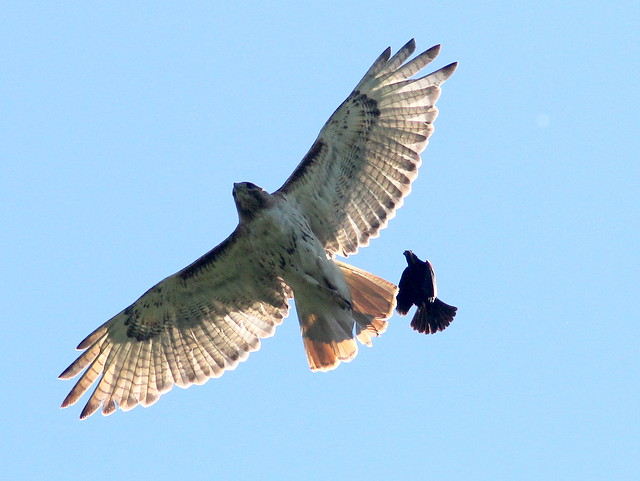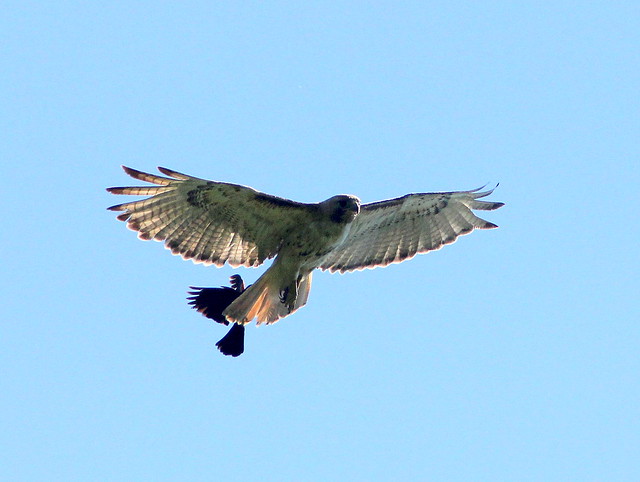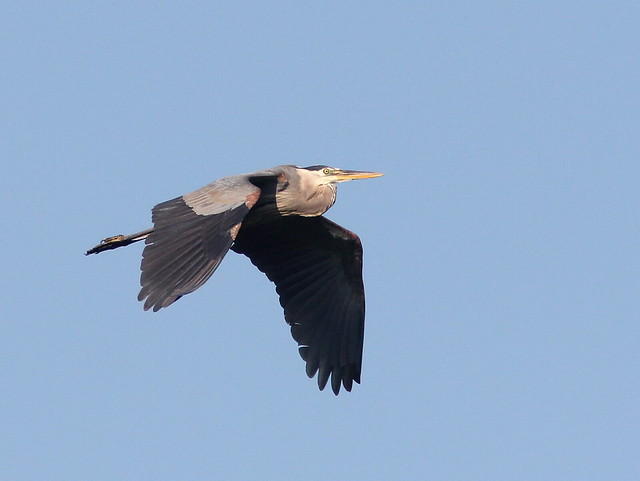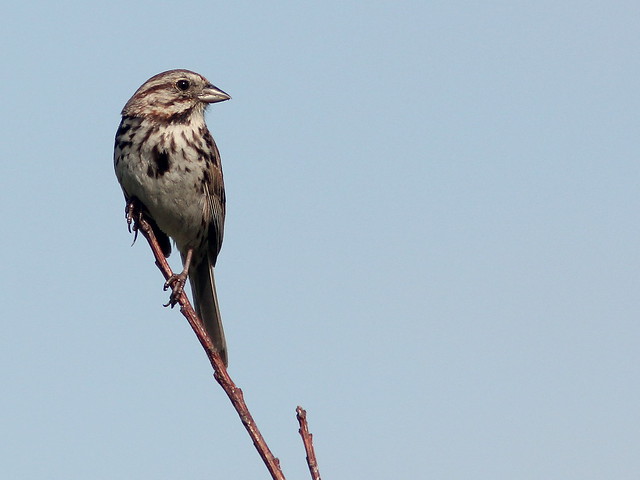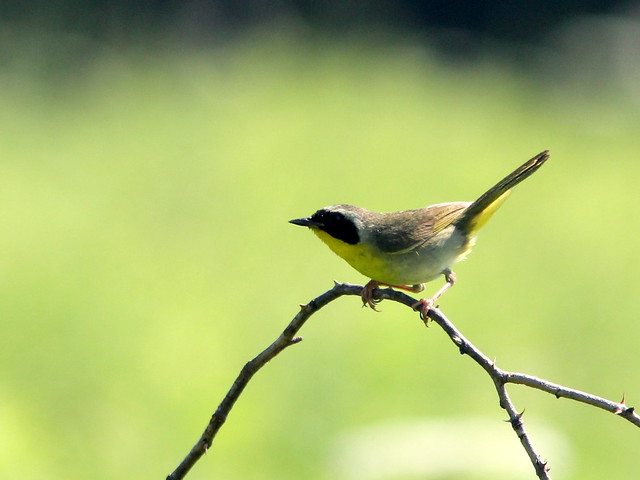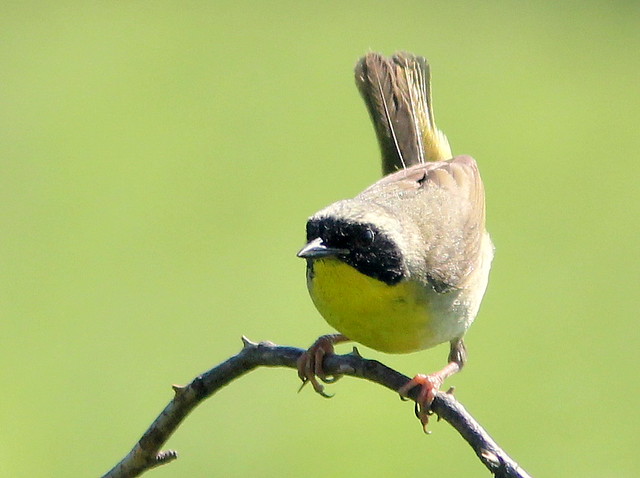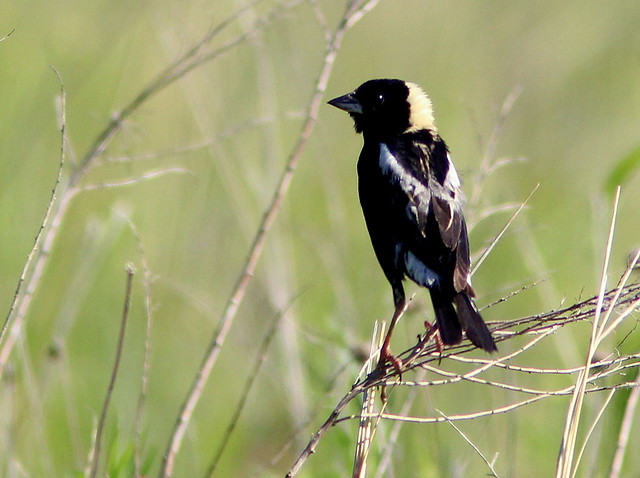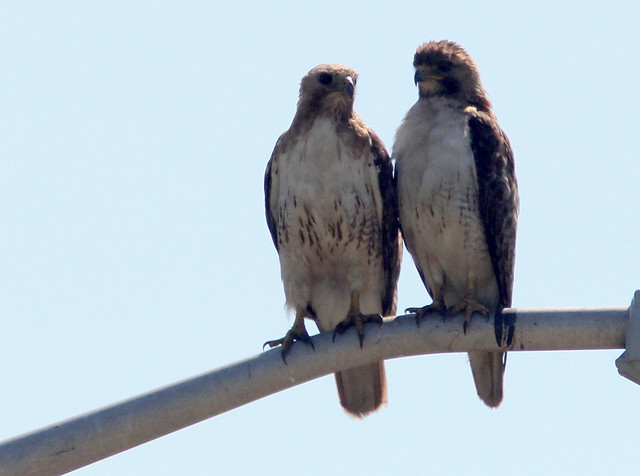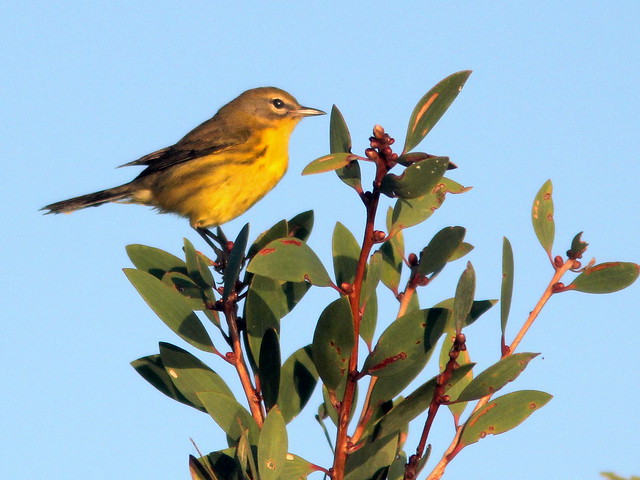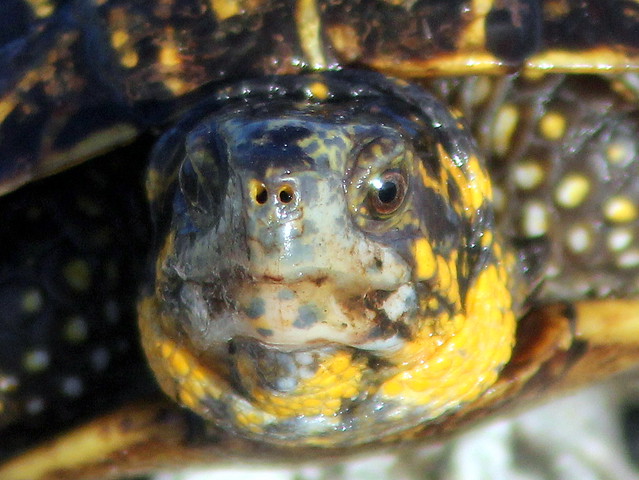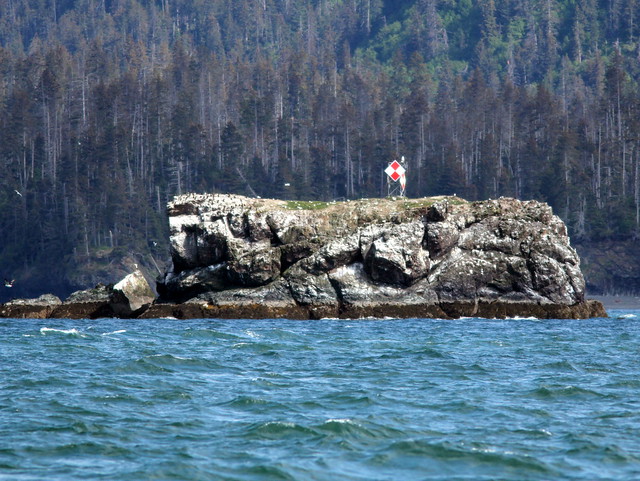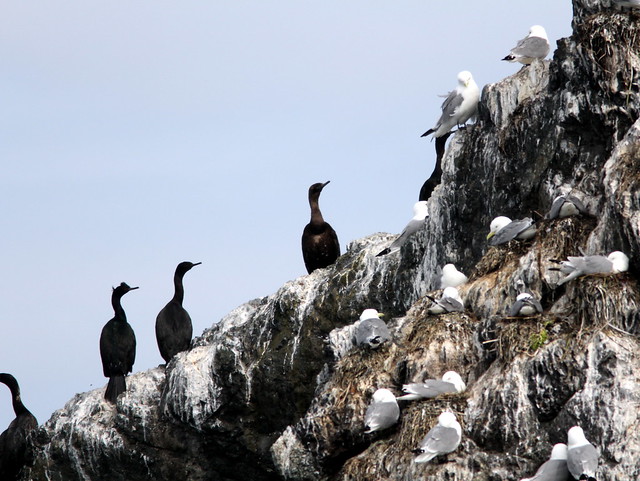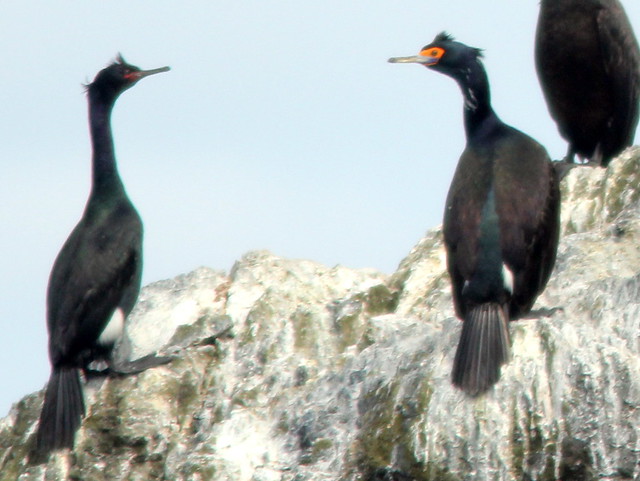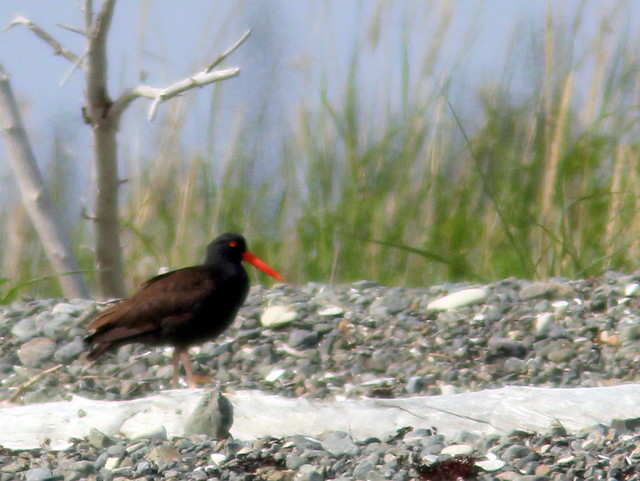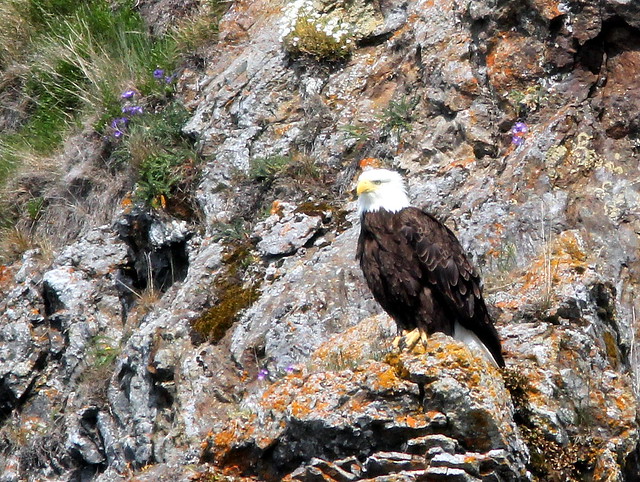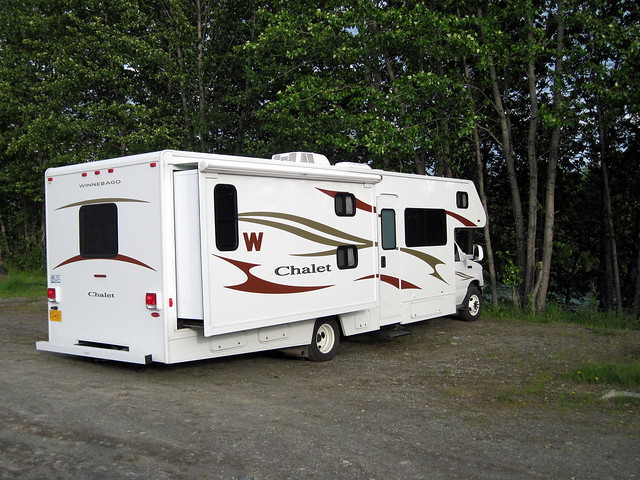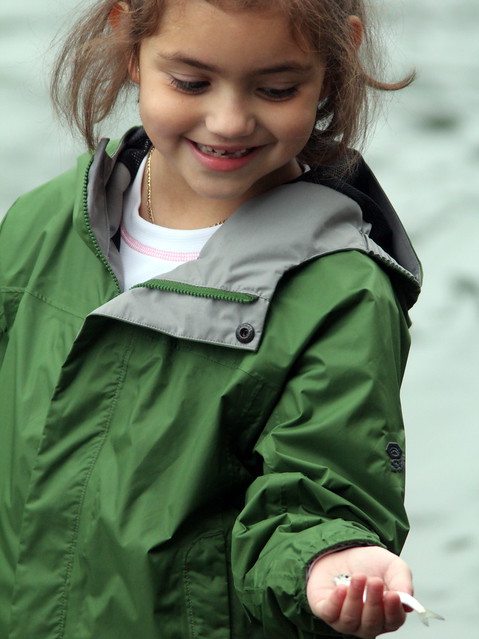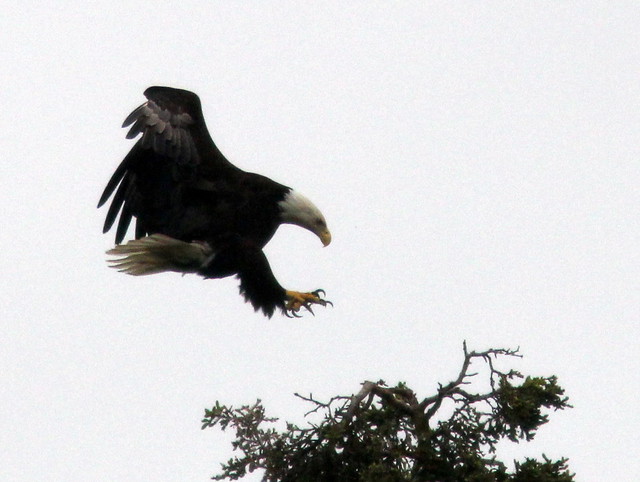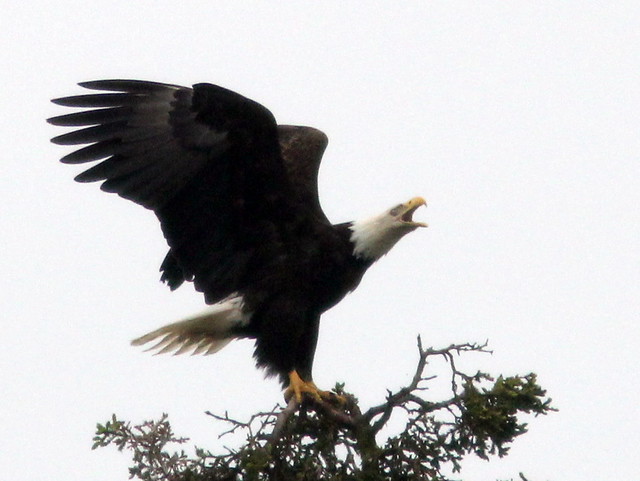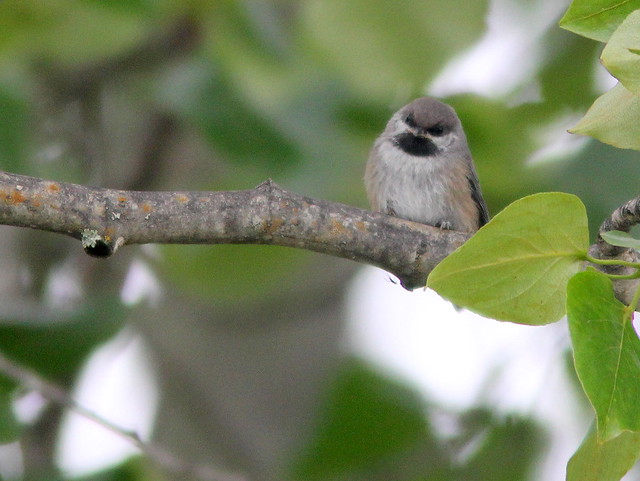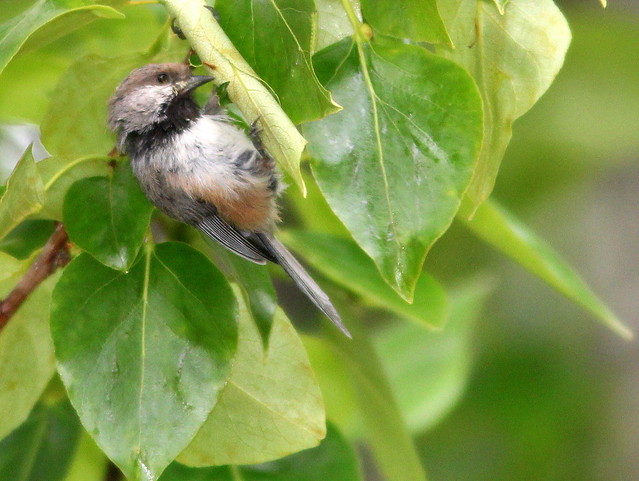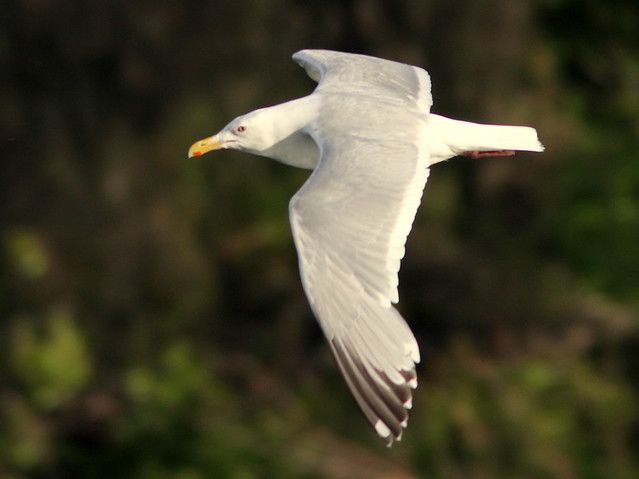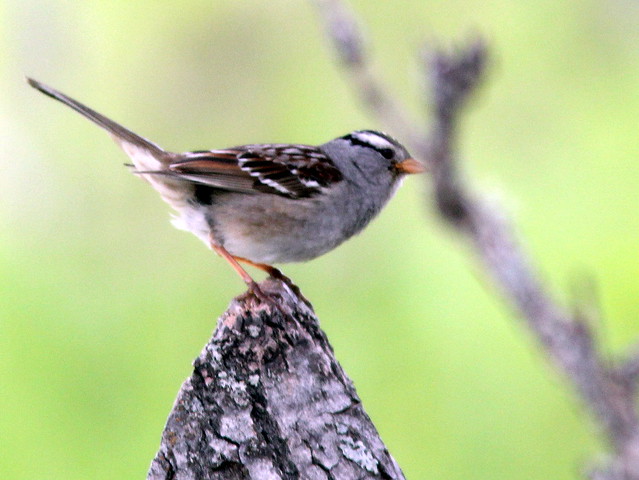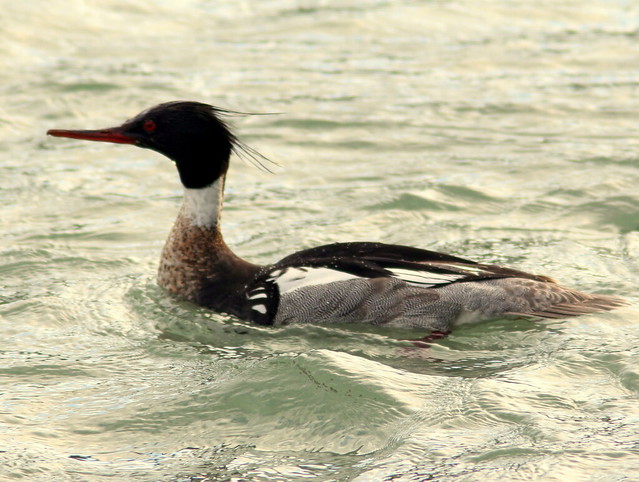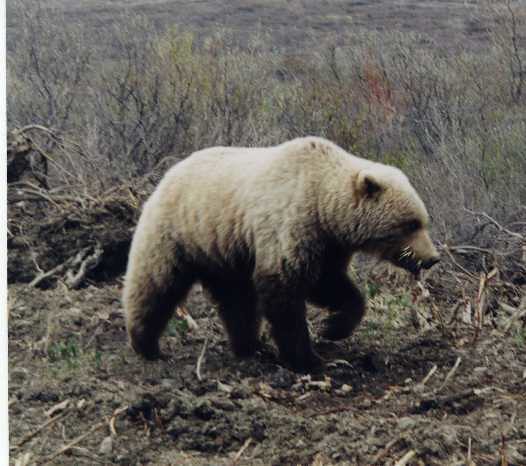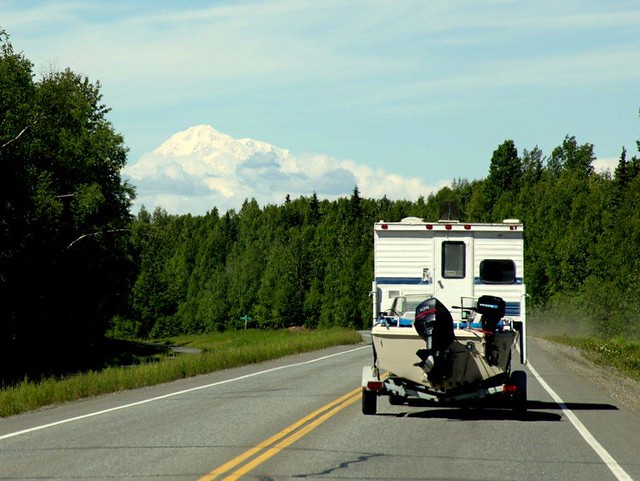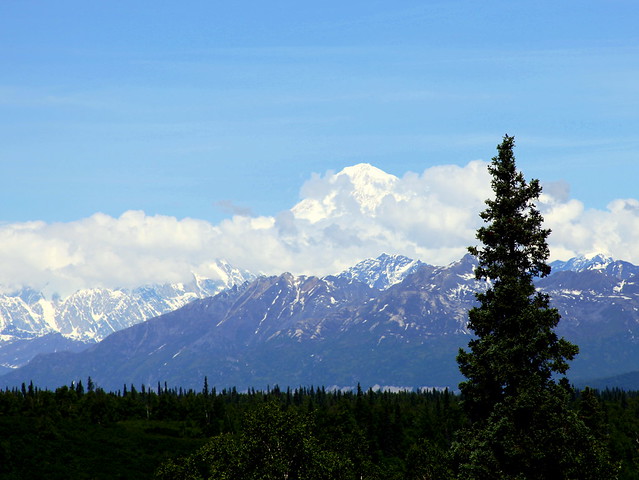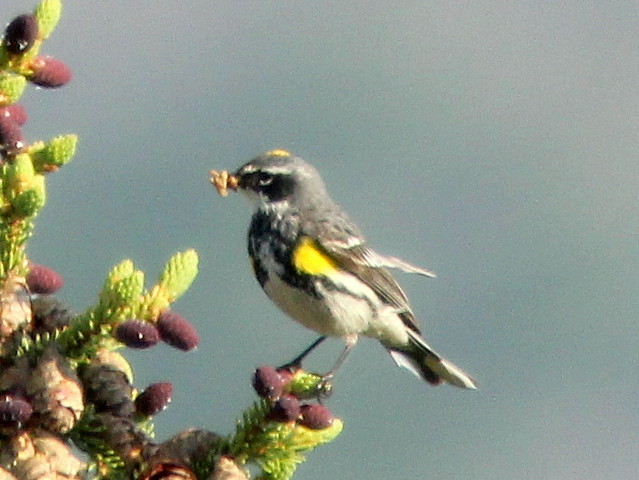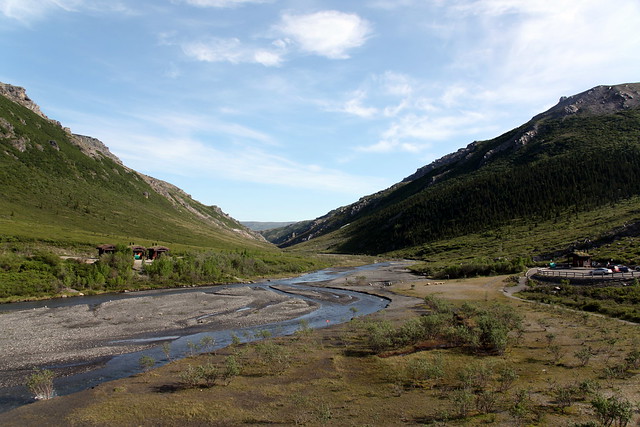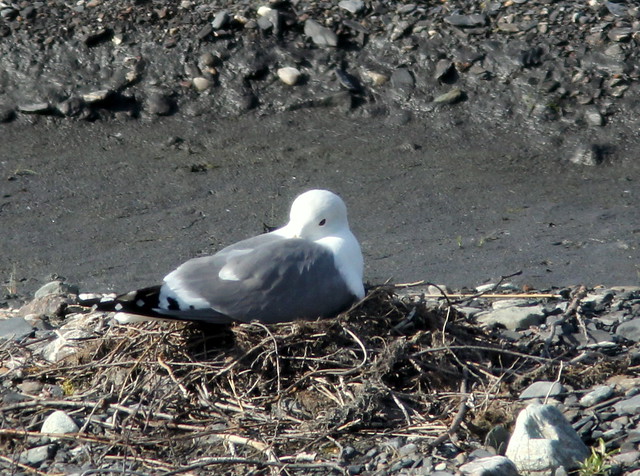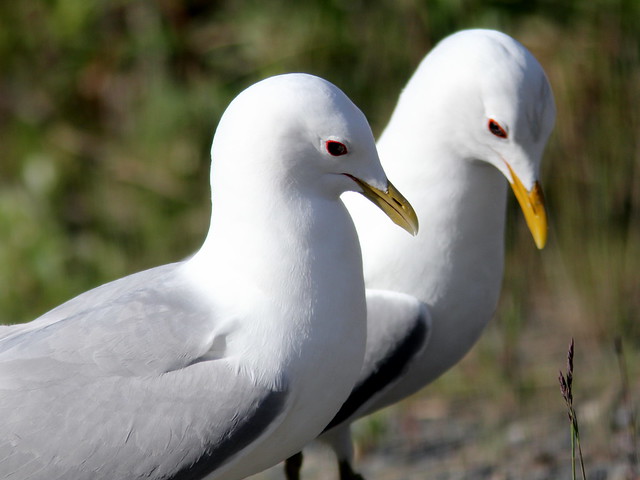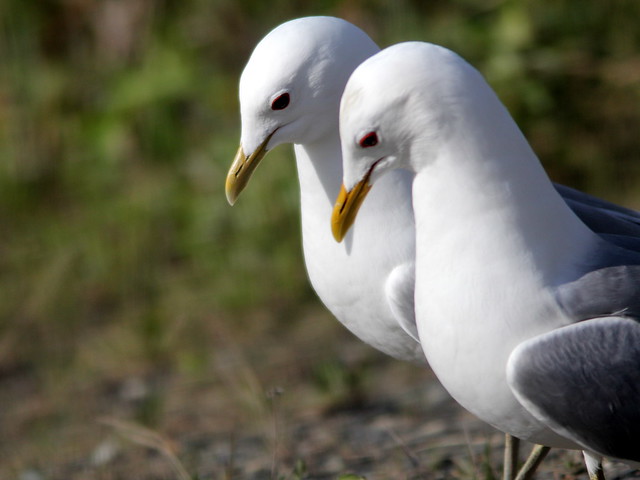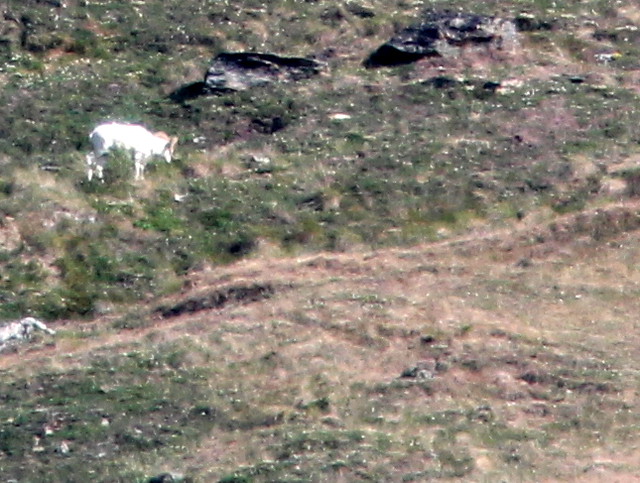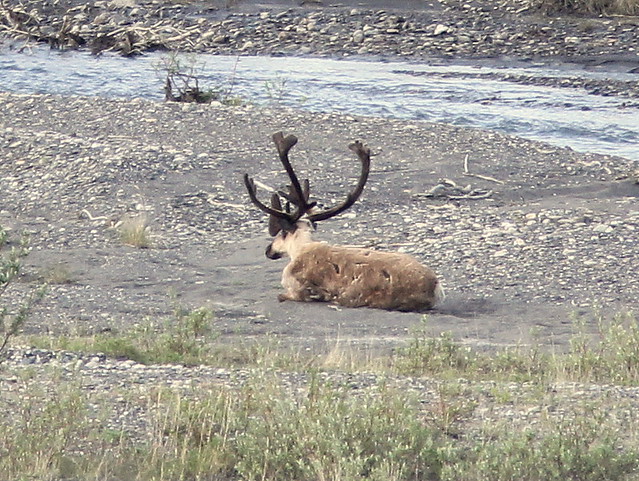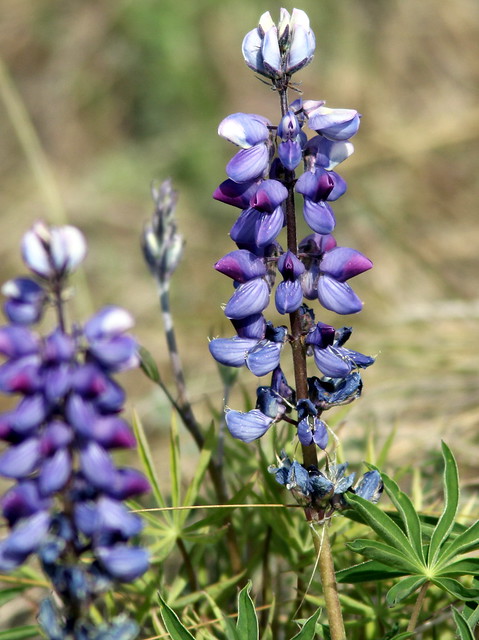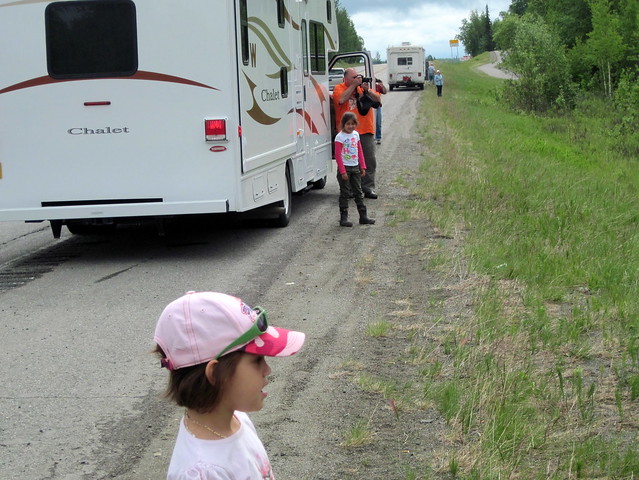Soon after returning from from Alaska to our second home in Illinois, I took a break from editing and reviewing the photos from the trip. Illinois weather had been quite variable, from cool and rainy to hotter than Florida. Our first stop was at Aurora West Forest Preserve, only a couple of miles from our condo. Our target bird was the Clay-colored Sparrow that nested there last year. We had no luck in finding the sparrow, but it was a delightful morning full of color and sound.
An Indigo Bunting sang a variant song from the top of a tree. Mary Lou and I had heard this same bird before we left for Alaska. Instead of the usual series of coupled warbling notes, this bird repeated two wheezy phrases that sounded like “Wree-Wree, Wree-Wree…” etc. It definitely meant to be singing, not sounding call notes.
I like the way that the blues and greens work together in this image:
A Field Sparrow sang vigorously. Its behavior suggested that a nest was nearby, as it raised its crest anxiously, making it look as if it were wearing a red hat:
The Red-winged Blackbirds were also in an agitated state…
…flying back and forth across the path in front of us as if to distract us from fledglings hidden in the high grass:
The blackbirds directed their ire at another trespasser; a Red-tailed Hawk endured repeated bombardment by four or five Red-wings:
One actually landed on the hawk’s back:
Two mornings later, we moved on to Dick Young Forest Preserve/Nelson Lake Marsh in nearby Batavia, birding the tallgrass prairie on the north side of the Preserve. Here, our target birds were Henslow’s Sparrows, Bobolinks and Sedge Wrens. We dipped on the sparrows and wrens, but did see Bobolinks.
Overhead, a Great Blue Heron drifted by lazily:
American Goldfinches were everywhere:
A pair of Killdeers guarded their three chicks, two of which are seen here:
Song Sparrows added to the morning chorus:
We encountered a singing Dicksissel about every 100 yards along the trail: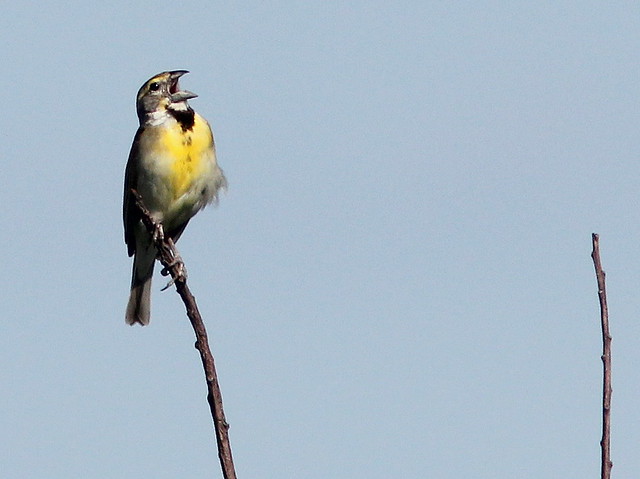
Common Yellowthroats were… well, common:
The yellowthroats, usually reclusive, were singing from perches in full view:
Bobolinks are among my favorite birds, and we saw several that morning: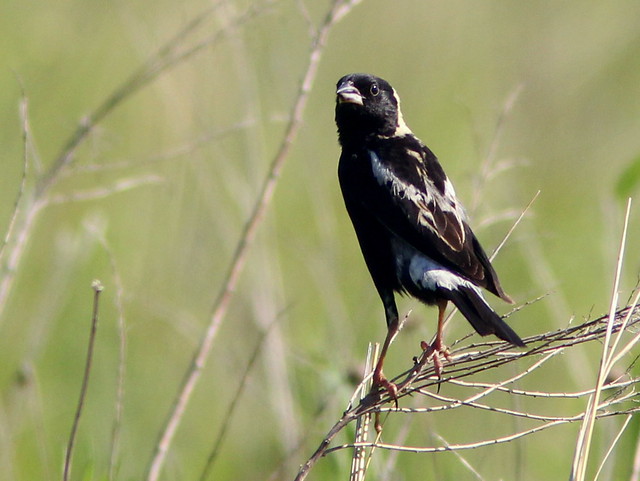
I always try to get as much of a Bobolink’s back and face in the photo as possible, not always easy to do:
On the drive home, we saw two adult Red-tailed Hawks sharing a roost on a street light:
Posted by: Ken @ 3:59 pm
Last week, while I was still in Illinois, I received an e-mail from Michael Fullana, a professional photographer who lives near our Florida home. He had seen one of my Bobcat photos on the Internet and was surprised to learn that they could be found so nearby. I gave him detailed instructions and within a day or so he was out before dawn in the wetlands next to our subdivision. He was able to get two photos of a very handsome Bobcat a little after sunrise.
Bobcat (c) by Michael Fullana: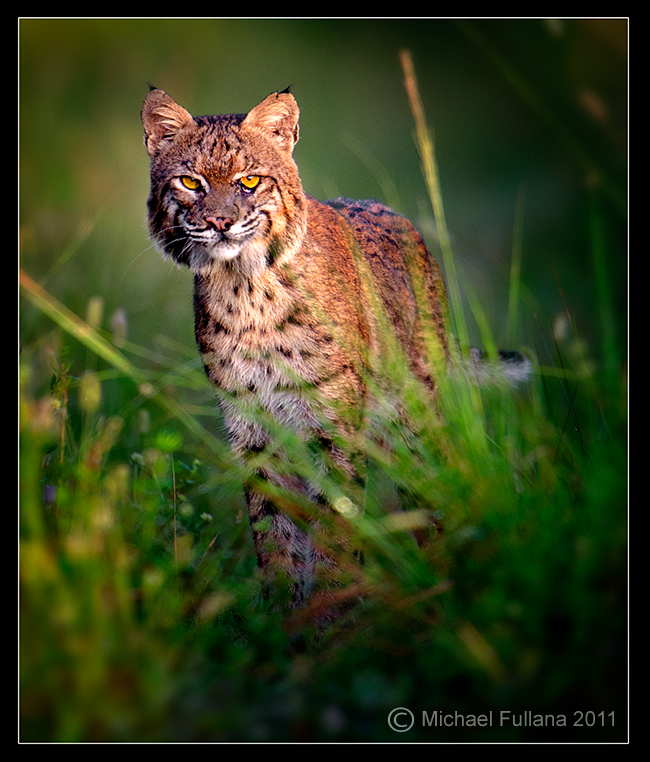
Creative Edge Photo www.creativeedgephoto.com Used with permission
Obviously, Michael’s photo was to die for, so I planned to get out early myself on the first morning that we did not have medical and dental appointments. Today we finally had no other obligations or early rain.
It was pitch black and there were no clouds when I left the house at about 5:20 AM, slathered with mosquito repellant. Away from the street lights, I walked along the unpaved roadway with a bright half-moon directly overhead. When I got to the spot where I usually cross over a berm into the protected area near the 196th Avenue Canal, I hesitated because it looked unfamiliar. The grass had grown quite high since my last visit over six weeks ago, and I have seen Cottonmouth moccasins here. It was just too dark. I had a little LED light on my key chain, so I used it to illuminate each step until I got on the open path where the moonlight revealed much more detail. It was too dark for me to proceed south on the trail along the levee where Michael had noted many Marsh Rabbits, a favored prey for Bobcats.This morning there were no rabbits to be seen– a bad sign? I tried to test fire my camera and there simply was not enough light.
Distant lightning flickered from a storm over the Florida Keys.As I waited in the dark, I noted the sounds around me, over the drone of mosquitoes. Tree frogs and geckos chirped like little birds. Purple Martins calls drifted down from the black sky. Night-herons squawked in the darkness. The first bird song I heard was the “Drink Your Tea” of an Eastern Towhee. Cardinals soon followed, along with one Carolina Wren. Mockingbirds were strangely silent. Boat-tailed and Common Grackles added their poor excuses for songs, along with a few Mourning and White-winged Doves.
In summer, here in the sub-Tropics, as Kipling said, “dawn comes up like thunder.” With the first bare glimmer of red in the east I attempted more test shots at various settings, but the shutter would not click.The sky rapidly lit up, and by about 5:50 AM I could get grainy exposures at ISO 3200, so I started walking slowly along the levee path. Mike said he got his photo at around sunrise, which was at 6:42 AM. I walked the quarter of a mile to the spot where he (and I, on several previous occasions) had seen the Bobcat. By then I could reduce the ISO to 1000 and take decent flash shots, pointing away from the path. My chosen vantage point was just off the main trail with my back to the east. One step forward permitted me to look both ways up and down the levee trail, which runs north and south. Directly in front of me, a side trail, already partially under water, led westward, deep into the wetlands. I waited, cautiously peeking from side to side every few seconds.
Suddenly, at about 6:20AM, I saw what I thought was a deer grazing at the edge of the path to the south. Forgetting that the flash was still on, I raised the camera and popped off a shot: 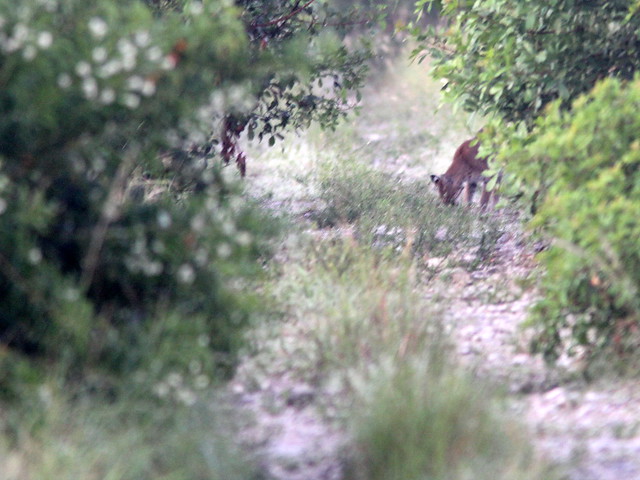
The animal immediately looked up and I realized it was not a deer: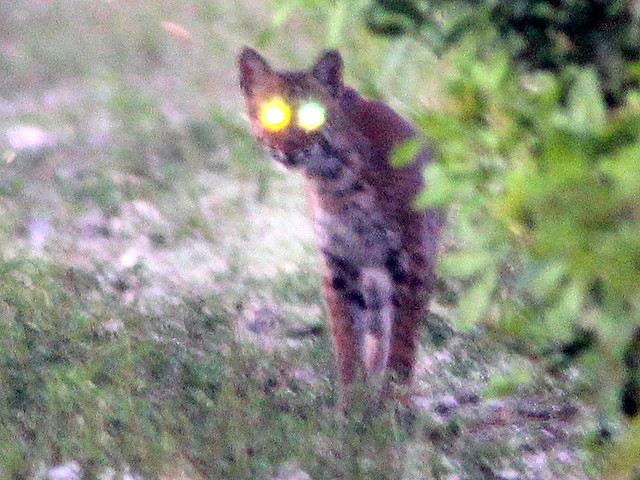
When I checked the photos on the camera’s LCD display I saw the eye shine and realized the gravity of my error. The cat stayed in place for a few more seconds, and I took several photos without the flash: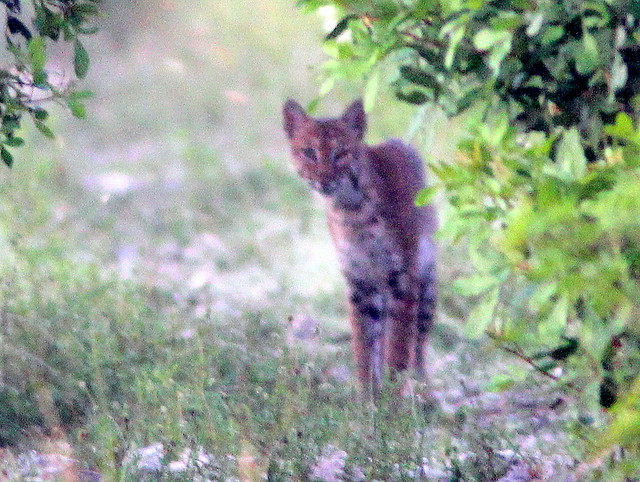
The above was the best of a batch of poor exposures. Because of the low light, there was considerable camera shake at ISO 1000. Worse, I auto-focused on some branches in front of the Bobcat. My manual focus shots were no better in the poor light. Vision problems with my right eye have limited my ability to focus sharply, and I just cannot get used to shooting with my left eye, as the camera is not friendly that way. Well, I will certainly try again, but not get out quite so early, and also will be extra careful about using auto-focus!
On the walk back along the path, I stopped to photograph this male Queen butterfly: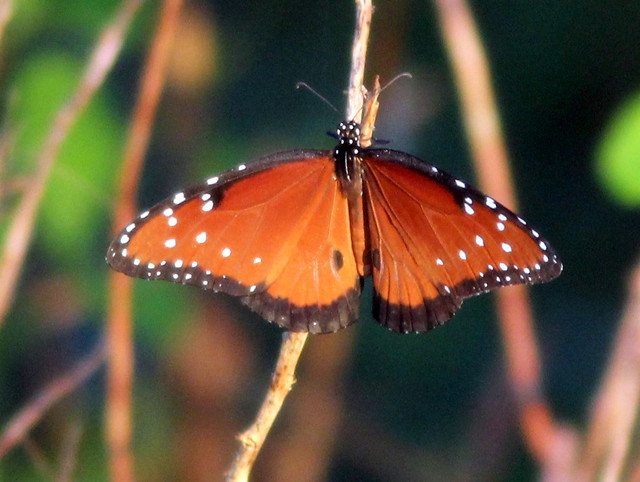
A small bird flitted right across my field of view just as I depressed the shutter. It was a Carolina Wren, elusive as usual:
Nearby, a Loggerhead Shrike was surveying its territory from atop a Melaleuca tree: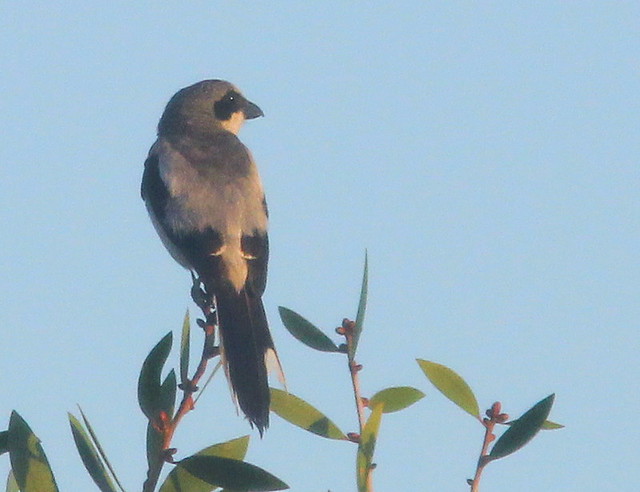
A female Prairie Warbler was carrying an insect, almost certainly to feed a nearby nestling or fledgling:
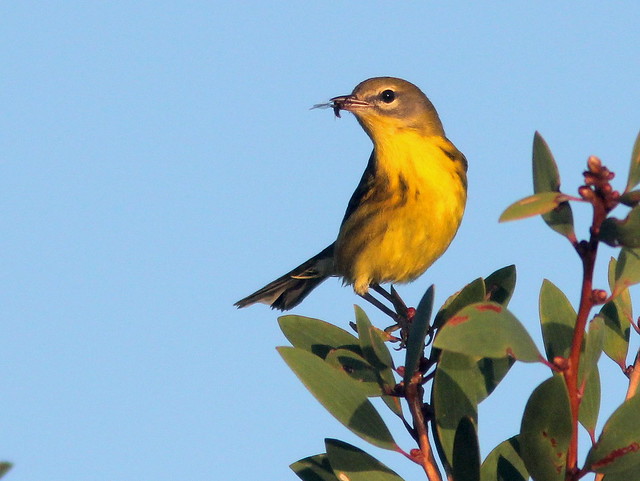
Prairie Warblers breed locally, and are one of the few warblers we get to see during the summer. After moving back and forth between trees with the insect in her mouth, she ate it, perhaps to help conceal the presence of its young. I have seen such behavior before in other species, though it would be hard to prove its motivation:
Before heading home, I turned north on the unpaved stretch of Miramar Parkway/SW 196th Avenue and visited the Harbour Lakes impoundment portion of the wetlands preserve that I call the West Miramar Environmentally Sensitive Land (ESL).
The reflection of a Great Egret highlighted the still water along the opposite shore:
A Red-winged Blackbird sang “Conk-ra-lee!” at the edge of the lake:
This Florida Box Turtle was crossing the gravel road while the sun was getting higher and hotter. As I approached I heard him hiss when he saw me: “(Oh) Shhhhhhi…t!” He tucked in his head and legs and looked out only after several minutes had passed: 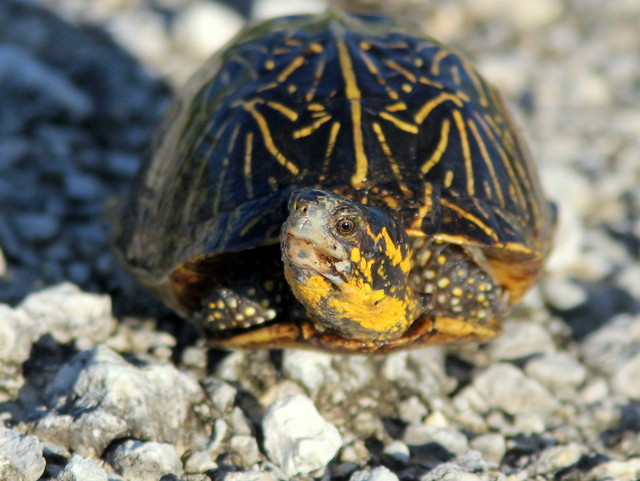
He might be slow, but his eyes sparkled with life:
After I took these photos I carried the turtle over to the shade of a grass clump on the side of the road. I turned away and within seconds he was actually running to the safety of the deep grass further back from the road!
After reading my past three blogs about our Alaska trip, our son-in-law, who accompanied Mary Lou and me in the 32-foot RV with our daughter and their two children, was only half-joking when he commented that I wrote volumes about the birds, but only a few lines about my loving family! The truth is, we spent much more time having fun together than we did looking for birds. But my blog is usually about birding and photography, and when it isn’t, I publish a disclaimer.
The sport of birding is compatible with almost anything we do where there are birds to be seen. Birding adds interest to any outdoor activity, as birds provide such readily visible evidence of the beauty and mystery of the world beyond the confines of house and home. This is a continuation of the narrative of our Alaska journey, which begins at this link.
“Birding is a fascinating, exciting, challenging game. It requires and encourages ever-growing skill. It may involve us in great adventures and wide travel, sometimes in difficult terrain. Seeking new birds to check off on our life lists may draw us further into the lives of these birds, challenging us to learn more about their life cycles, their behaviors, and ecology; and as our ecological perspectives expand, we may be stimulated to become more involved in conservation work, to protect the habitats of the many species we enjoy.” (Burton S. Guttman, Birding, February 2004)
The route from Soldotna to Homer was direct and only about 75 miles. Approaching from the bluffs north of the city, we could see Homer Spit arching out into Kechimak Bay. Our objective was Heritage RV Park, which turned out to be a very nice place for our two-night stay.
We parked the RV in a slot that was right on the edge of the gravel beach, with magnificent views of snow-covered mountains across the water and along the shore to the north. 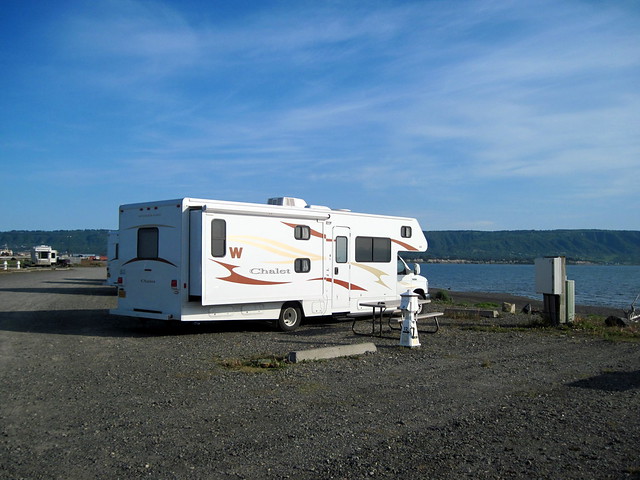
The tide was almost all the way out, and our granddaughters wasted no time getting out to explore the tidal pools and collect shells. 
Bald Eagles were much in evidence. For thirty years, until her death in 2009, Jean Keene, the “Eagle Lady of Homer Spit” fed them during the winter with surplus and freezer burned fish from the seafood processing plant where she worked, attracting over 200 eagles at a time to her campground on the Spit. An ordinance banning the feeding was about to go into effect during Jean’s terminal illness, but its implementation was delayed until after her death. (Link to “Eagle Lady” video, which also shows views from Homer Spit)
Now the eagles keep watch as fishermen return to clean their catch, competing with the gulls for a few scraps.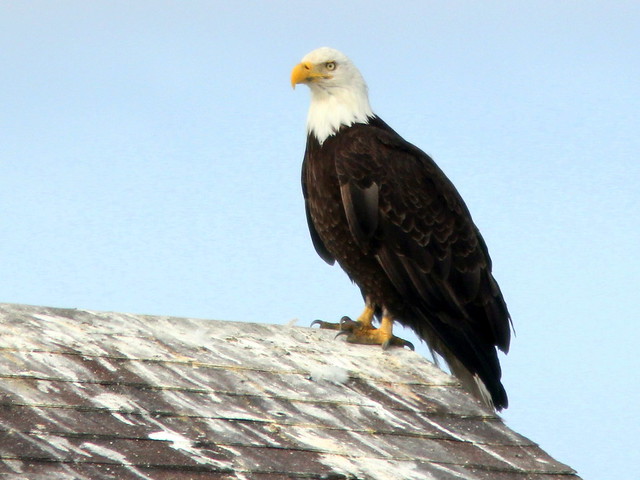
The next day we took a wildlife watching cruise of Katchimak Bay, and visited the seabird colony on Gull Island:
As we approached Gull Island we encountered huge flocks of Common Murres:
A pair of Pigeon Guillemots appeared to be having a disagreement: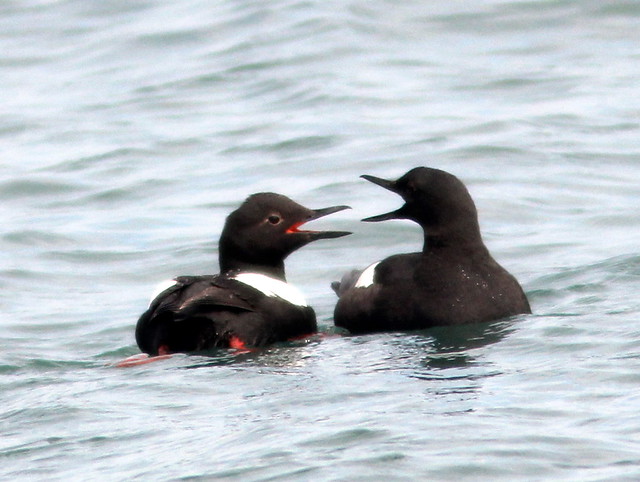
Pelagic Cormorants carried nesting material towards the island:
Several Tufted Puffins exhibited striking colors and patterns: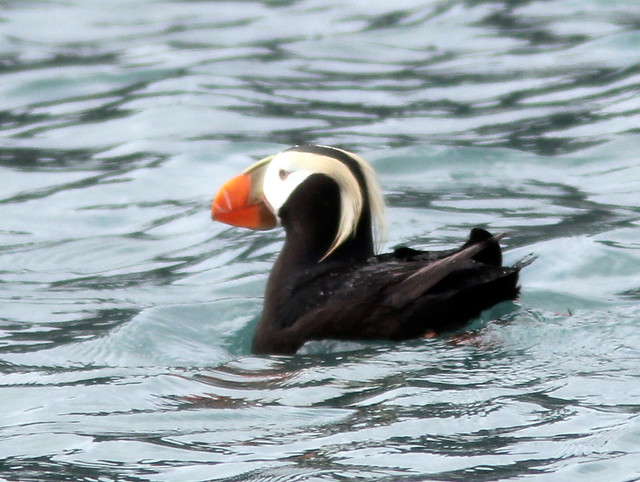
Black-legged Kittiwakes competed for nesting space on the cliffs:
A pair of kittiwakes share a tender moment. Note their bright greenish bills: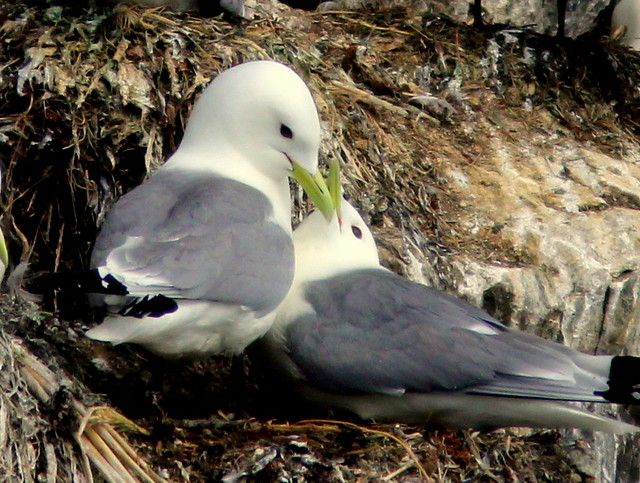
Groups of murres nested among the kittiwakes, as a larger Glacous-winged Gull looks on: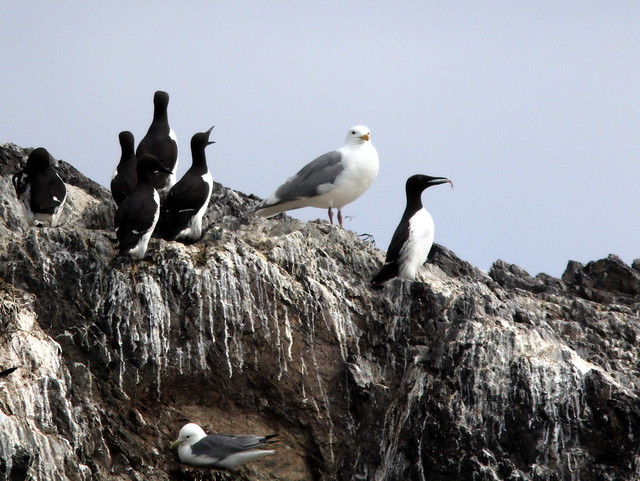
Cormorants also occupied sections of the rock cliffs of Gull Island:
I found two Red-faced Cormorants roosting on Gull Island, distinguished from the numerous smaller Pelagic Cormorants by their larger head with two tufts of feathers, and the more extensive red facial patch that extends across their forehead.
While all the other seabirds were the first of each species I had ever photographed, the Red-faced Cormorant was the first sighting of this species for Mary Lou and me (respectively our life list numbers 508 and 578 in the ABA North American area):
A distant Black Oystercatcher was tending a chick that was hidden by the rocky berm behind it:
Our seven-year old granddaughter counted 17 Bald Eagles during the cruise. This one roosted on a cliff face amid colorful lichens and wildflowers:
We saw many Sea Otters; this one is striking the clam on its belly with a rock held in its fists:
A rather large youngster slept on its mother’s belly: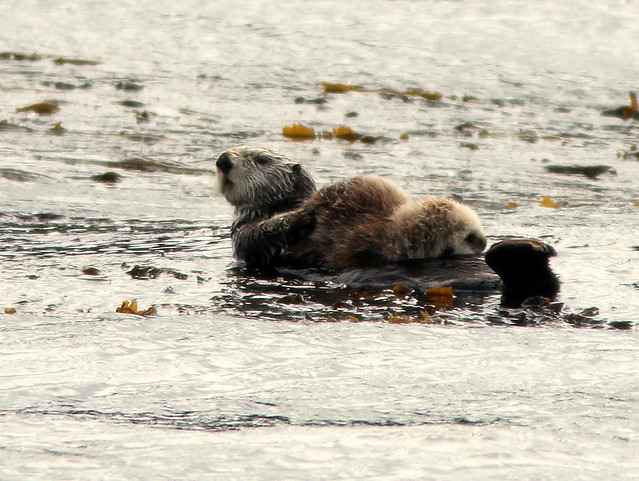
We had lunch and a pleasant walk through the remote city of Seldovia (population 286), known for its chain-saw art. This ornate carving is at the mouth of the harbor: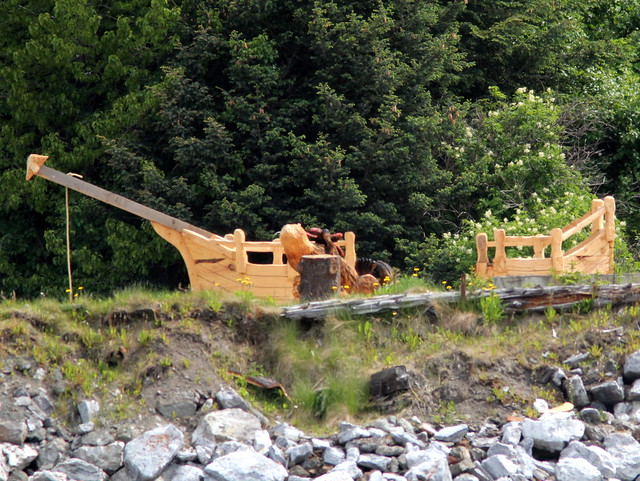
We spent the last three nights of our Alaska RV adventure in Seward.
After an all too brief visit to Denali, we set out on a rather daunting 400 mile drive south to the Kenai Peninsula. I learned from the locals to pronounce it “KEEN-eye,” rather than “ken-EYE.” Our daughter and son-in-law shared driving duties with me, which contributed to a much more relaxing experience. Early in the day, we encountered some rain, the only daytime showers we had during the ten days we spent in Alaska. This is a continuation of the narrative of our Alaska journey, which begins at this link.
Retracing our path to Anchorage, we followed Alaska Route #1 south and then eastward as it followed along the shore of Turnagain Arm. This part of Cook Inlet gained its name because early explorers, in search of the Northwest Passage, found this long eastward extension of the Inlet to lead only to a river. Frustrated, they had to turn around again. The road follows the Alaska Railroad, which opened up the Kenai Peninsula to travelers.
Here is the route we followed:
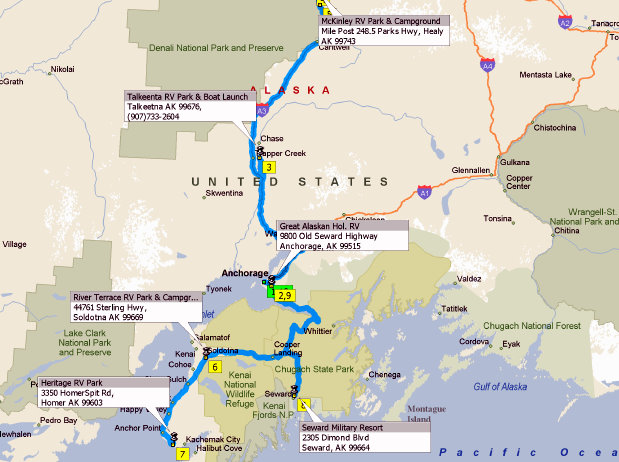
In a past visit to Alaska, Mary Lou and I had watched a pod of Beluga Whales feeding right along the highway, but this time the tide was so low that the mud flats extended as much as a quarter mile out from the shore. Tidal fluctuation is extreme, averaging about 25 feet. It was just past ebb tide, and at one point we saw a rather violent wall of water moving rapidly in across the flats as the tide started rising..
Reaching the end point of Turnagain Arm, the highway doubles back to the southwest through spectacular mountain ranges of Chugach National Forest, joining Sterling Highway near Cooper Landing. The road then enters the huge Kenai National Wildlife Refuge, and roughly follows the Kenai River as it courses towards its mouth at Cook Inlet on the west side of the Kenai Peninsula.
After driving about eight hours, we reached Soldotna, where we camped at River Edge RV Park, on the Kenai River. This section of the river is famous for its salmon runs, which peak around the beginning of July. Fishermen flock to the area and RVs clog all the campgrounds. We found it almost empty, so we had our choice of parking locations.
We took a space right beside the river. Wooden steps lead down the steep bank to a boardwalk that extends about 100 yards along the water’s edge:
Our daughter and her family wasted no time getting down to fish for Dolly Vardin and Rainbow Trout. Naturally, I found time to bird when I wasn’t helping the girls keep bait on their hooks and untangling their fishing lines. The older (seven years old) granddaughter caught the first fish, a 2 inch minnow.
Graci was very proud of her catch:
We saw lots of eagles. This is part of a sequence to show a Bald Eagle landing in a tree on the other side of the river:
Under rather heavy overcast, the Arctic terns were flying by non-stop and usually distant, so my shots all came out either blurred or soft
Since we were in Alaska during the Summer Solstice, the days were very long. The sun didn’t set until after 11:00 PM and rose around 4:00 AM. The sky remained bright and blue all night. We stayed up late and it took us a few days to adjust our sleeping habits. I got out early to look for land birds around the campground.
I found a small flock of Boreal Chickadees. They moved fast, and it was difficult to keep them in view:
This little one looked very scruffy, as if ready to molt:
My iPod Touch got fried the first night of our trip, when I charged it with a third-party AC charger . It contained the big Sibley Field Guide app, so I had no help in identifying unfamiliar birds. I also lost access to my e-mail and Flickr accounts, but WiFi reception was spotty in most locations anyway.
Glacous-winged Gulls were common along the river:
There were many Bonaparte’s Gulls. Like the terns, they were usually on the wing and moving rapidly in the poor light:
One Bonaparte’s Gull rested briefly as I watched the children fish along the bank:
White-crowned Sparrows were the most common land birds encountered everywhere we stopped during our Alaska visit:
A Red-breasted Merganser swam right up beside the boardwalk, but in the poor light I failed to capture the true beauty of its plumage:
After one night in Soldotna, we broke camp at midday, and started out for Homer, only about 75 miles to the south.
We looked forward to visiting Denali National Park for the third time in our lives. Fifteen years ago, our first cruise to Alaska included a flight to Fairbanks, and travel by rail back to Anchorage with two nights in a lodge near the entrance to the Park. This allowed Mary Lou and I to take a sightseeing bus some distance inside the park, followed by a long afternoon and evening exploring the beaver ponds and woodlands around our lodge. As we boarded the train back to Anchorage, we decided to return one day, but also allow more time for exploration.
A few years later, in early June, we attended a four night birding program at Camp Denali, accessible by a 95 mile, seven hour ride in a comfortable Camp bus to the end of the Denali Park Road. Our tiny cabin lacked electricity, but had a wood stove, a clean outhouse, and drinking water that was available from a nearby spigot. Situated high on a bluff, we had a cloudless view of 20,320 foot high Mount McKinley (AKA Denali) every day.
At the time of our earlier visits to Alaska, I was not “into” wildlife photography. I carried a point-and-shoot 35 mm film camera. Subsequently, I scanned some of my photos, but lost them after we moved from New Mexico to Florida, when my computer drive failed. I have since been unable to find most of the originals, which included herds of Caribou, a Red Fox running along the road with a Spruce Grouse in its jaws and a shot of Denali, reflected in the still waters of Wonder Lake. Luckily, this photo of a hapless Grizzly Bear survived, though the fate of the bear may be in doubt..
The bear had encountered a Porcupine, and its face was riddled with quills:
When our older daughter suggested that take an RV trip in Alaska soon after the end of the school year, we welcomed the opportunity. It was to be the first visit to Alaska for both of our daughters’ families. Our RV journey through Alaska was primarily an opportunity for a reunion of our two daughters, delayed for a year by the tragic event that had prevented them from getting together a year earlier at our family reunion in Colorado. Because of another unforeseen conflict, our older daughter’s husband also missed our prior family reunion, five years ago in Dallas, and had never met the younger of our two granddaughters. This is a continuation of the story of our Alaska trip that begins at this link.
On our first day northbound out of Anchorage via Wasilla on George Parks Highway (AK-3) we had several clear views of the great cone of Denali, some 80 miles distant, as we approached the turnoff for Talkeetna Camper Park at milepost 98 (taken through the windshield of our RV):
The next day, we paused at a roadside park at mile 135 for a panoramic view of the Denali range, its peak visible just above the clouds:
Our older daughter and her husband greeted us when we arrived at McKinley RV Campground, located at mile 248, about ten miles north of the entrance to Denali National Park.
We occupied adjacent spaces. Their camper is to the right:
We had so much fun reconnecting that there was little time for birding. Indeed, in order to accommodate both of our son-in-laws’ passion for deep sea fishing, we had allowed only one day for exploring the park. We took a 5 hour wildlife tour only 16 miles into the park. The driver provided an excellent interpretation of the history, geology, flora and fauna of the Park.
At the first stop, during an introductory film, I looked out the open door of the theater and saw this (Myrtle) Yellow-rumped Warbler atop a spruce:
The final tour bus stop was at the Savage River, a braided stream with Mew Gulls nesting on its many gravel bars:
Mew Gull at nest:
Two of the Mew Gulls were courting, walking back and forth together in a sort of formal dance routine, which I captured through the bus windows:
They serenely walked together one way, then turned around and walked back:
We spotted three Dall Sheep, more than a mile away on a mountain slope; this was my best image of one:
White-crowned Sparrows were abundant:
The scenery was spectacular, but there were few sightings of big furry creatures to fascinate the children. From inside the bus, I took blurry photos of Snowshoe Hares and one of a distant Caribou.
The Caribou was a male in velvet, resting on the river bed about a quarter mile away:
Lupines were blooming everywhere:
The next morning, on our 400 mile drive south to our next stop on the Kenai Peninsula, we encountered a traffic jam of sorts. A yearling Moose was grazing at the side of the highway, and motorists had pulled over to watch.
We joined the onlookers:
The young Moose paid us little heed, and we continued on our journey:
This was family time, and birding was a secondary pursuit. What a pleasure it was, to share the joy of discovery with our daughters, their husbands and our grandchildren! The birding experience at Denali, while brief, left me with an enduring
image of the tranquil courtship ritual of the Mew Gulls, and a renewed
determination to return to the solace of this great wilderness.
Our next stop: Soldotna, on the Kenai Peninsula















